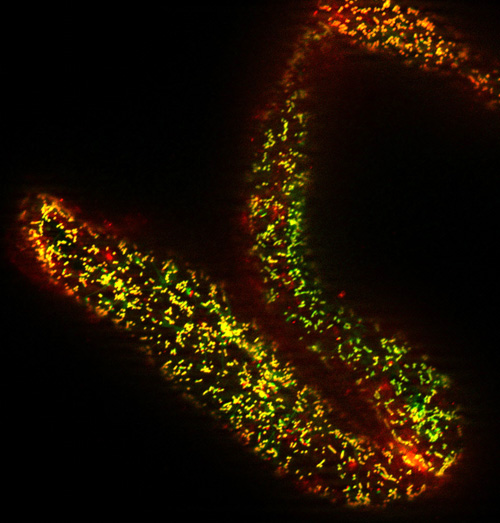Fluorescent Dyes
Fluorescent dyes allow to visualise cellular components, complementing genetic engineering. However, it is important that these chemical tools have to be safeguarded for undesired side effects, so called artifacts (ars = art, factum = made) that lead to false interpretations. Most dyes do not harbour specificity by themselves, but have to be conjugated to other molecules that confer specific binding to cellular targets. A few dyes bind preferentially to specific membranes or organelles, based on their innate chemistry. However, this specificity is usually smaller than that conferred by protein-protein interaction. The use of appropriate controls is therefore essential, as well as the right concentration. To design these controls and to interpret the effects of inhibitors correctly, it is vital to know the target and specificity of a given dye. On these pages, we will compile the necessary information to use fluorescent dyes correctly.
- cell wall (Propidium Iodide)
- nuclear dyes (DAPI/Höchst. Propidium Iodide)
- vesicles and membranes (Rhodamin G6 Chloride, DiOC6, FM4-64)
- tonoplast (ACAIN)
- mitochondria (Mitotracker, DiOC6, Rhodamin G6 Chloride, Plant PeptoQ)
- ions (CoroNa Green)

